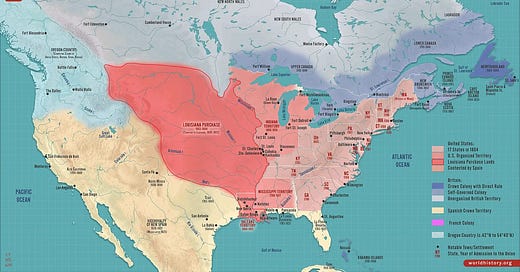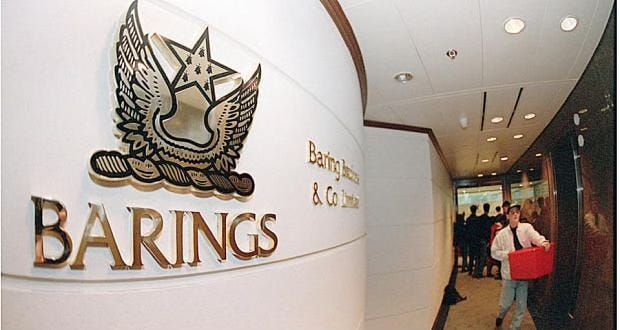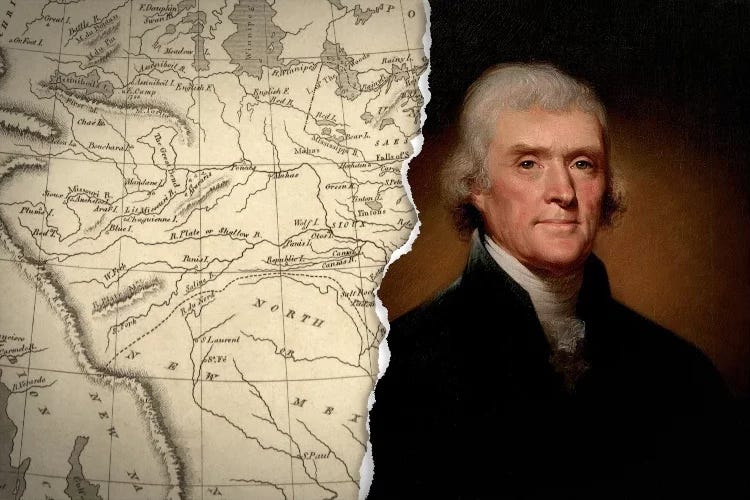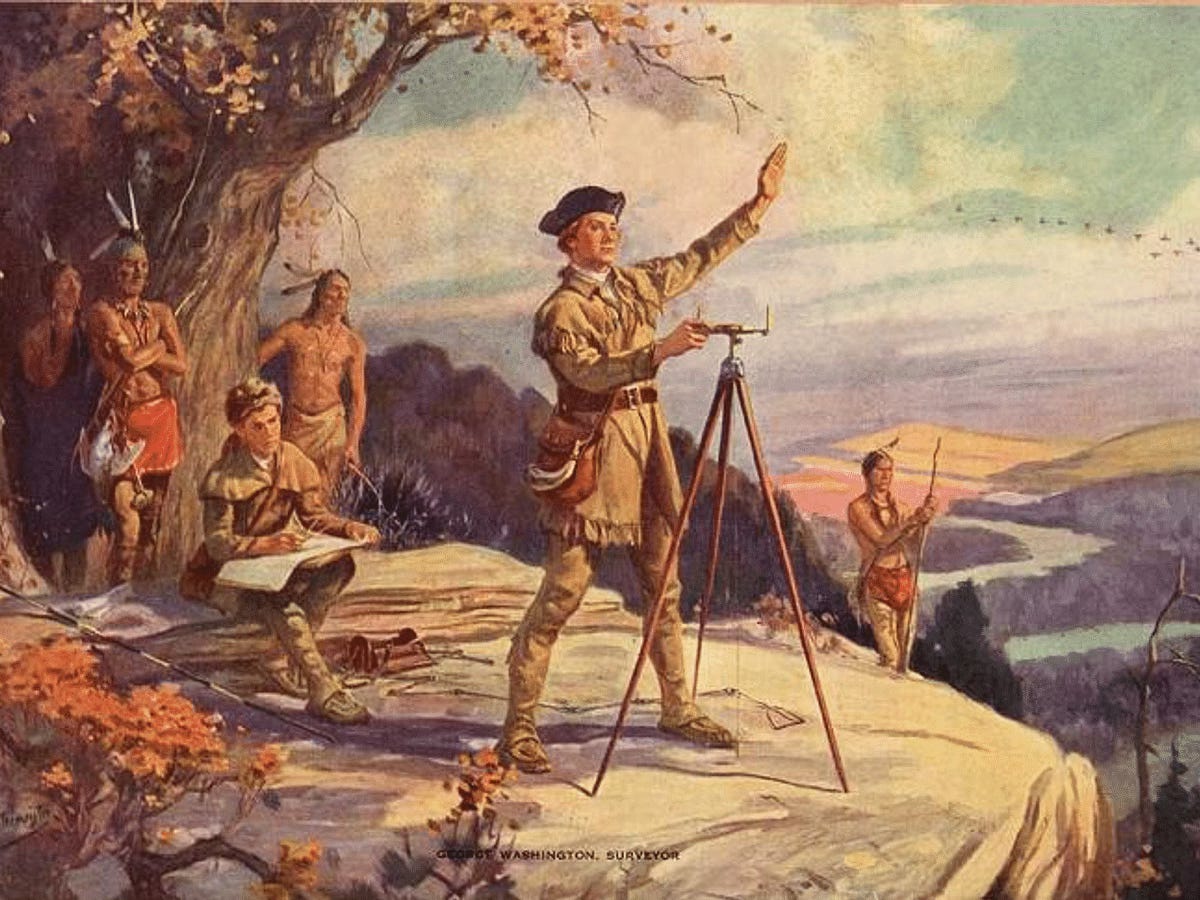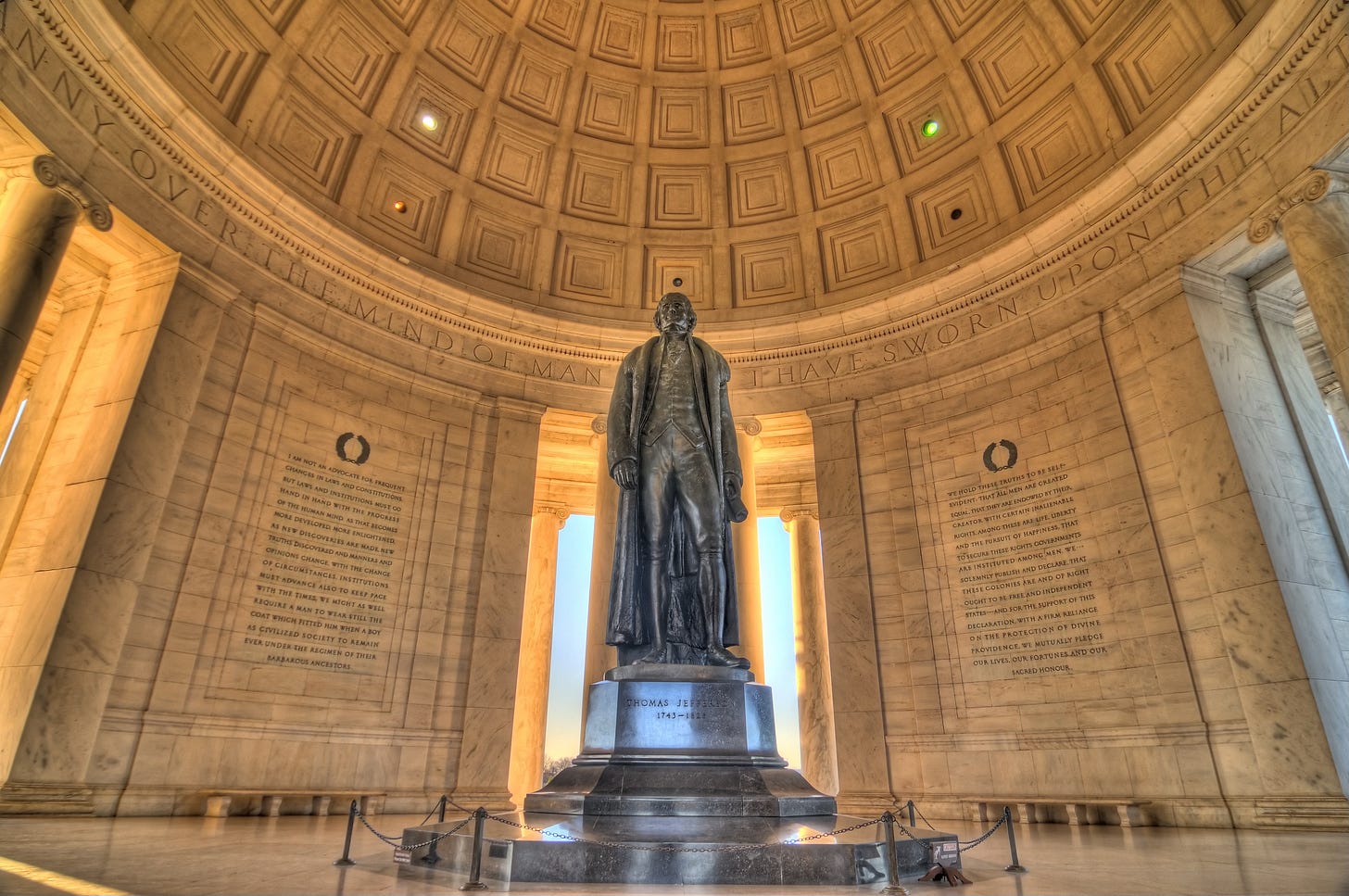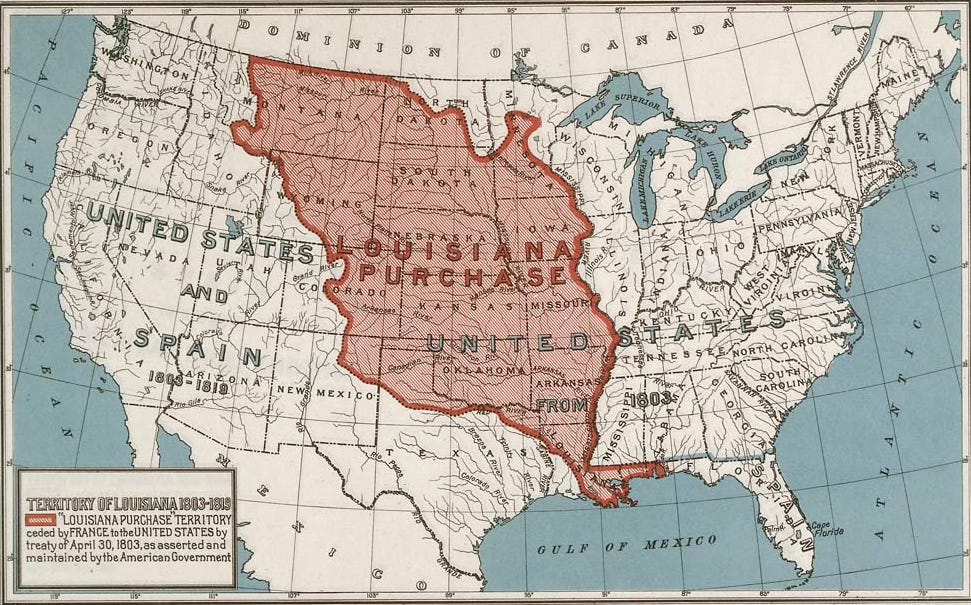The Louisiana Purchase Part 4: The Price of Expansion: How America Financed the Louisiana Purchase
Part 4 of our Louisiana Purchase Series
By The Bayou Insider Staff
In hindsight, it was one of the greatest bargains in world history. For just $15 million, the United States secured over 828,000 square miles of land—a deal that more than doubled the size of the young republic. The newly acquired territory stretched from the Mississippi River to the Rocky Mountains and from the Gulf of Mexico to the Canadian border. At just under three cents per acre, it’s often remembered as a masterstroke of diplomacy.
But at the time, this massive land deal was anything but simple—or universally applauded. The United States in 1803 was a relatively poor, still-developing nation. The federal government had limited funds, no central bank, and a fragile economy built largely on agriculture and shipping. The idea of borrowing millions to purchase an enormous stretch of mostly unexplored land sparked serious constitutional, political, and financial debates.
This wasn’t just a transaction—it was a high-risk, high-reward investment in America’s future. And to pull it off, the U.S. would have to rely on something it hadn’t yet fully earned: international financial trust.
🏛️ A $15 Million Gamble
The price tag of $15 million was substantial—nearly 170% of the federal budget for that year. In fact, in 1803, the entire U.S. federal budget was less than $9.5 million. So how did America afford a purchase of this size?
The deal was structured into two parts:
$11.25 million paid in U.S. Treasury bonds, issued to France with interest to be repaid over time.
$3.75 million in assumed French debts owed to American citizens, which the U.S. agreed to pay itself.
No actual cash changed hands at the outset. The United States effectively said: “We don’t have the money now, but we’ll pay you—and our lenders—later.” It was a creative form of government-backed financing that, while common today, was a bold and relatively untested maneuver in 1803.
💰 The Banks That Bought an Empire
With France needing cash quickly and the U.S. having none to spare, the success of the deal came down to trust and credit. The bonds issued by the U.S. were handed to France, but Napoleon didn’t want to wait 15 years to see their full value. He wanted immediate funds.
Enter two powerful European banking houses:
Barings Bank of London, one of the most influential banks of the era.
Hope & Co. of Amsterdam, another prominent financial firm deeply tied to international trade.
These banks purchased the U.S. bonds from France at a discounted rate, providing Napoleon with the cash he needed right away. In return, the banks collected interest payments from the United States over time.
Here’s the twist: British bankers were helping fund Napoleon, their greatest enemy at the time. By funneling U.S. dollars into French coffers through financial intermediaries, the deal revealed the cold logic of finance—profit over politics, interest rates over ideology.
This arrangement helped legitimize the United States in the eyes of the global financial community. The fact that the U.S. could attract European investment was a major sign of growing international credibility.
🇫🇷 Napoleon’s Real Goal: Power in Europe, Not Empire in America
While Americans dreamed of western expansion, Napoleon Bonaparte had a very different priority: war in Europe.
France’s ambitions in the New World had largely collapsed following the loss of Saint-Domingue (Haiti). The Haitian Revolution—led by formerly enslaved people—was a stunning blow to French colonial authority and upended Napoleon’s hopes of a western empire.
Now, with rising tensions across Europe and war with Britain looming, Napoleon shifted his attention. Louisiana, once a strategic asset, had become a liability. Maintaining it meant diverting resources from the European front.
Selling it gave him:
Immediate funds to finance his military machine.
A way to deny Britain any foothold in North America.
A chance to empower a future rival to England in the Western Hemisphere.
He famously said of the deal, “I have given England a rival who, sooner or later, will humble her pride.”
🗳️ Domestic Turmoil: Can America Afford This?
Despite the excitement surrounding the deal, not everyone in the U.S. was sold on the purchase—especially when they heard the price.
President Thomas Jefferson was caught in a bind. He had long championed a strict interpretation of the Constitution, and the Constitution made no mention of acquiring new territory. Yet Jefferson also envisioned a vast agrarian republic—one that needed land to grow. In the end, he made the deal, admitting it might stretch constitutional bounds but arguing it was too important to pass up.
The real political opposition came from the Federalists, particularly those in New England. They:
Feared the western territory would weaken their political power.
Believed the federal government had no authority to expand the nation through purchase.
Worried that adding large swaths of undeveloped land would encourage chaos and overextension.
Raised alarms over how the debt would be paid and what it would mean for economic stability.
Albert Gallatin, Jefferson’s Treasury Secretary, bore the responsibility of making the numbers work. He crafted a repayment plan that balanced debt reduction with land development, hoping the economic benefits would outweigh the initial costs.
🌾 Economic Return: The Land That Paid for Itself
The fears of debt and disorder began to fade as the territory quickly proved its value.
Agricultural Expansion: The Mississippi and Missouri River valleys became the breadbasket of the nation. Fertile land and river systems supported massive agricultural growth.
Land Sales: The federal government sold portions of the new territory to settlers and speculators. These land sales brought in substantial revenue—enough to offset the debt incurred by the purchase.
Trade Expansion: With control of New Orleans and the Mississippi River, trade flourished. Farmers could ship goods more easily to both domestic and international markets.
Migration & Settlement: New communities emerged across the frontier. Americans, and later immigrants, moved west in waves, fueling expansion, innovation, and the forging of a new national identity.
In short, the Louisiana Purchase began paying for itself within a few short years, not just financially, but in national growth, pride, and potential.
📜 Legacy: A Blueprint for Future Expansion
The financing of the Louisiana Purchase set a powerful precedent: strategic borrowing can be a tool of diplomacy.
Rather than waiting for wealth to accumulate, the U.S. learned that well-negotiated debt could secure national interests. This model would be used in:
The Florida Purchase (1819)
The Annexation of Texas (1845)
The Alaska Purchase (1867)
Even later infrastructure projects like railroads and canals
It also established the United States as a credible borrower on the world stage—a country whose promises could be trusted by international banks. That credibility became a cornerstone of American expansion.
🧠 Final Thoughts: A Risk That Reshaped a Nation
The Louisiana Purchase wasn’t just a land deal. It was a test of America’s economic nerve, political flexibility, and diplomatic ambition.
Had it failed—had the land proven worthless or unmanageable—the U.S. might have collapsed under its own weight. But it succeeded. And in doing so, it rewrote the rules of what America could be.
Today, as we debate our own national priorities, spending, and vision for the future, the Louisiana Purchase reminds us that boldness, when grounded in strategic wisdom, can pay off in extraordinary ways.
It was a risk.
It was a debt.
And it was, ultimately, a declaration: America is here to stay—and we’re just getting started.
💬 What Do You Think?
Was the Louisiana Purchase a brilliant move of foresight—or a dangerous financial leap that happened to work out?
Share your thoughts in the comments or write to us at thebayouinsider@proton.me
The Louisiana Purchase Part 3 - Diplomatic Ripples: How the Louisiana Purchase Shook Europe and Spain
In 1803, a single land deal between the United States and France forever changed the trajectory of American history. The Louisiana Purchase didn’t just redraw the map of North America—it redefined the scope of American ambition and sent diplomatic shockwaves across the Atlantic. With one stroke of the pen, the United States doubled in size, securing con…

